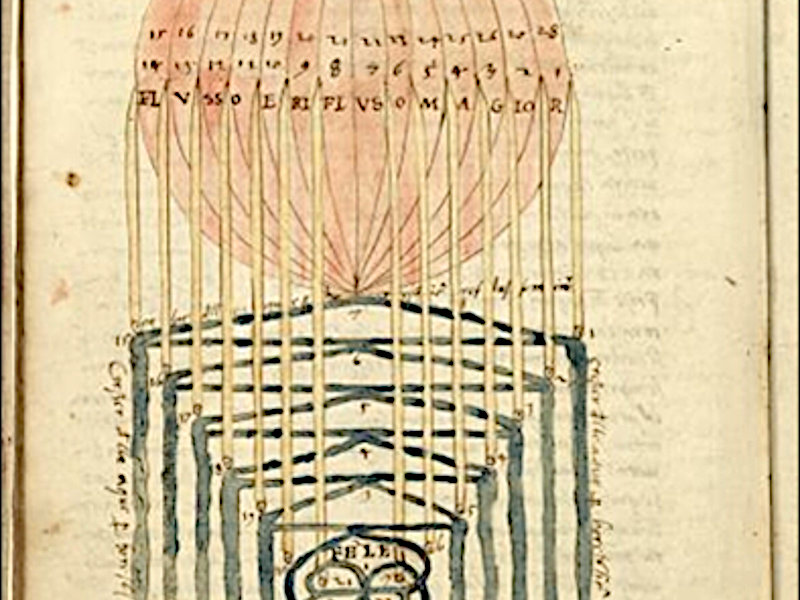Histories: Case Studies
Cosmology within the Natural Debates of Early Modernity
As a research group, we investigate the emergence and consolidation of discourses on cosmology that culminated in the seventeenth century. Our historical inquiry is achieved through a series of interconnected case studies on the history of scientific concepts and their settings. We particularly look at the ideological and material dimensions present in these examples, because they reflect metaphysical concerns that explicitly or implicitly affected the science of the time, and because they reveal the formative role played by institutional constraints upon the knowledge of the time. In addition, confessional struggles were a fundamental component of early modern politics and strongly influenced the scientific culture at large.
Comparative histories that present cosmology as a cultural practice offer the basis for a revised reflection on the cultural-political history of science and a new historical-epistemological understanding of the connection between science, ideology, and power. Moreover, an investigation of the contexts of early-modern scientific justification raises the question about the world-transformative function of cosmology beyond its ideological function.

Our historical enquires are grouped around four themes:
- Exploring the Conceptual Boundaries of Early Modern Cosmology relates to the history of cosmological concepts and ideas in their connection with various philosophical and natural traditions (such as neo-Platonism, Renaissance naturalism, Scholasticism) and overarching problems (such as heavenly influences, harmony, vitalism);
- Cosmology, Confession, and Cultural Politics looks at the embedment of cosmology in religious and cultural-political contexts, paying particular attention to the Protestant, Catholic, inter-confessional, and secular dimensions;
- Institutions, Networks, and Crossroads of Cosmological Exchange concerns the connections between cosmology and society, including the socio-economic ground of institutions and networks. The research areas included here investigate the locations and structures behind the generation and circulation of knowledge, including the scholars who disseminated scientific knowledge (as ‘networkers’);
- Applied Cosmology addresses the function of cosmology as a tool for the transformation of the world, which is exemplified in relation to nature (hydro-environmental management and geo-engineering) and in governance (cosmography in the service of colonization).
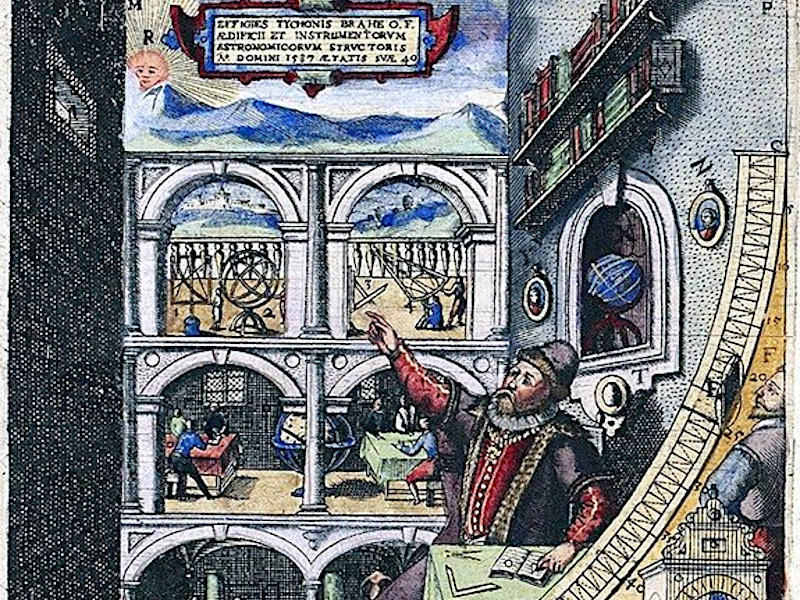
Exploring the Conceptual Boundaries of Early Modern Cosmology
In Metaphysics and Institutions of Astrology from the Middle Ages to Early Modernity, Rutkin reconstructs astrology’s status and locations in the relatively stable medieval map of knowledge ca. 1250 to 1500, focusing primarily on its scientific and theological foundations. Then he explores and analyzes the complex dynamics of how astrology’s status changed, i.e. how it was delegitimized as knowledge and practice during the Enlightenment, and thus became a member of the so-called occult or esoteric sciences, and ultimately became the alternative language of knowledge and praxis that it is today. This epistemological shift — astrology’s downgrading and removal from the map of legitimate knowledge — marked an epoch-making transformation from premodern to modern in both the histories of knowledge and of science, and had conceptual, institutional and confessional dimensions that Rutkin is exploring in detail.
In general, the Principal Investigator, Omodeo, works on the ‘long’ Renaissance of cosmology in the sixteenth and seventeenth centuries. In particular, he explores the confessional and political struggles behind conceptions of the natural order, the cosmos, and science in a time in which traditional universities were confronted with the emergence of new scholarly institutions, scientific academies, and courtly culture. Omodeo reconstructs the social roots of cosmological ideas in institutions and their circulation via networks of scholars based at Protestant universities, Jesuit colleges, or inter-confessional centers such as the University of Padua. He aims to understand the development of scientific ideas in their two-sided dependency on ideology and institutions. In early modernity, cosmological orientation shaped and transformed ideas, society, and the world at a symbolic as well as a material level. The exceptional relevance of astronomy for the exploration, mapping, and conquest of the earth and the heavens led to exacerbated struggles for scientific hegemony over cosmology and cosmography.


Omodeo’s research area Celestial Physics Before Celestial Physics argues — contrary to the widespread conviction that there was no celestial physics before Newton (or Kepler, at the earliest) — that the Aristotelian tradition developed a highly sophisticated theory of heavenly physics which connected causal explanations and mathematical modeling. Omodeo’s inquiry looks at the Aristotelian roots and debates on the causes of celestial motion, the soul of the heavens, and celestial causes on earth (most prominently, in the case of sea tides). He focuses on Italian university Aristotelianism (especially in the Padua School) but also looks at the European echoes of that scientific debate north of the Alps in the time of the first circulation of the Tychonic and Keplerian planetary systems.
Renaissance Naturalism: Telesio’s Legacy, discusses and clarifies Bernardino Telesio’s (1509-1588) idea that nature should be investigated ‘according to its own principles’. This novel approach to the world was received both by Baconian experimentalism and incipient naturalism as a specific path to nature renouncing transcendence as an explanatory means. His approach was seen as a criticism of the principle of authority in the sciences as well as of the ancillary conception of philosophy as dependent on theology. A collective volume on Telesio’s work, entitled Bernardino Telesio and the Natural Sciences in the Renaissance (2019) and edited by Omodeo, provides a timely reassessment of Telesio’s work and his struggles with the intellectuals and religious authorities of his time. It forms an important contribution to a more complete understanding of the relations between science, philosophy, and religion in the cultural settings of early modernity, and also remedies the scarcity of secondary literature on Telesio in English.
Also focused on Renaissance debates, The Planetary Earth: Early Controversies over Terrestial Motion shows how the publication of Copernicus’ major work De Revolutionibus Orbium Coelestium was not the first time the viability of a heliocentric cosmology had been discussed in the Western tradition.
Several Latin sources show that the possibility of the Earth’s motion was a disputable topic and that the idea of the Earth being at rest was not taken dogmatically by early modern scholars Omodeo and the project associate Bardi have translated these sources into Italian and commented upon them, including writings by Regiomontanus, Copernicus, Calcagnini, and Rheticus.

In early-modern Europe, a number of thinkers began to speculate that the natural world was fundamentally autonomous and able to self-regulate, needing virtually no divine intervention. From an epistemological standpoint, such a conception paved the way for the idea that nature could be understood within its own principles and rules, which renounced or marginalized divine teleology and providence from scientific debates. In Early Modern Thoughts on Natural Immanence: Cosmology, Natural Autonomy, and Freedom, Omodeo, Garau, and Del Nonno all research different aspects of this fundamental shift.
Omodeo writes about the cosmological work of the professor of Aristotelian philosophy Cesare Cremonini. Although he did not embrace the novel perspectives of his colleague, Galileo, Cremonini is a fascinating example of a scholar who propounded radical interpretations of Aristotelian cosmology that infringed against central dogmas (the Creation, God’s Providence in the world, and God’s freedom) while relying on the relative protection from the Roman Inquisition they were granted by the peculiar political status of the Serenissima. Omodeo reassesses Cremonini’s views in connection with his cultural-political positioning as a defender of the autonomy of university against Church influences.
Garau investigates the early-modern transformations of the concept of “conatus” which was related to the problem of the inner tendency of all beings towards their preservation. The concept of conatus was employed by a number of prominent early modern philosophers such as Descartes, Hobbes, Spinoza, and the young Leibniz — authors for whom the concept had extraordinary significance — and among physicists such as Huygens and Newton. It then fell into disuse in the eighteenth century. It can be said of this concept, perhaps more than of any other, that it represented a specific trait of the early modern worldview.
Del Nonno deals with the development of Spinoza’s thought of immanence in relation to the scientific culture of his time, paying particular attention to the idea that Spinoza’s cosmology should not be understood as an outcome of the post-Copernican debates in the first place, but within the debate about the order of nature in natural philosophy. He investigates the connections between metaphysics, physics, and ethics in Spinoza’s vision of nature, particularly in relation to his conception of freedom. Spinoza’s departure from an early ethical intellectualism (in which adequate knowledge is necessary and sufficient to achieve freedom) towards a dynamic account of freedom has strong practical connotations and concerns the way in which individuals operate and cooperate in the world.
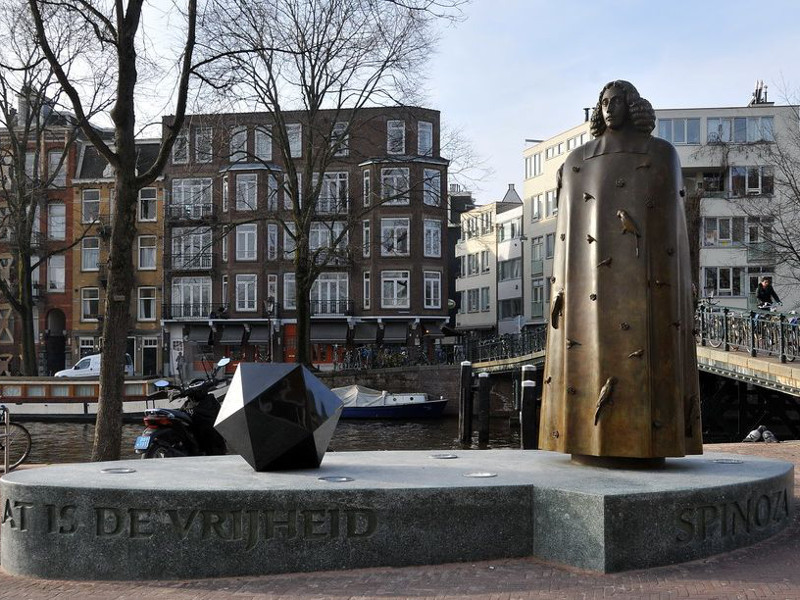
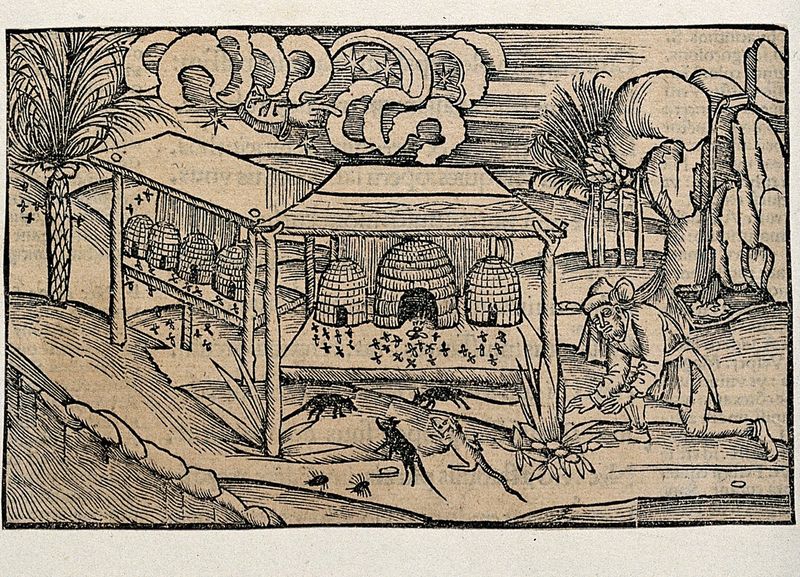
In Historical Epistemology of Life and the Cosmos, Wolfe and Omodeo investigate the key emergence of vitalism in the philosophy of science. Wolfe writes that vitalism points to a central problem of early modern conceptions of the world and life, and distinguishes between two forms of early modern vitalism: cosmic and immanent. The first kind refers to a vision of the cosmos as a living animal, while the second understands vitalism as emerging from and limited to organic bodies. His current research aims to produce a philosophical ‘counter-history’ of biology in which the focal point is vitalism in its successive incarnations and definitions. This constitutes the epistemological background against which cosmological and immanentist forms of early modern vitalism can be understood.
In parallel, Omodeo explores forms of early-modern cosmic vitalism. The lively debates on the life of the heavens brought together Averroist and Alexandrist accounts of heavenly motions (seen as the effect of the action of souls that animate celestial bodies), medical ideas about the cosmic origins of life, and neo-Platonic cosmologies. Early-modern supporters of cosmic vitalism met with the staunch opposition of theologians who feared the rebirth of forms of astrolatry (i.e., the worship of the stars), natural philosophers who wished to avoid the risks of cosmological homogeneity (among them, influential Jesuit astronomers and natural philosophers), and early mechanists.
Cosmology, Confession, and Cultural Politics
(De)Constructing Authority in Early Modern Cosmology, an area that is addressed by the work of various scholars in the group in different ways (including Omodeo, Ovanes, Prins, and Rutkin), contextualizes the notion of “authority” in early modern science, primarily in the fields that had been mathematized before the rise of the “new science”, i.e., astronomy and, to a large extent, cosmology. By reconstructing the argumentative strategies with which scholars either constructed or rejected authoritative texts and concepts, this line of research demonstrates that the turn to an experimental approach did not by necessity affect the epistemological value of “authority” usually associated with the pre-modern period. Controversies over natural/cosmological issues were often couched in terms of controversies over opposing authorities, such as Pythagoras versus Aristotle or Ptolemy versus Aristarchus. The various authorities that were constructed and deconstructed by scholars of the time will be approached from two perspectives: that of the role of the principle of authority in the early modern sciences and in the neo-Latin literature of the time.
The Aristotelian environment at reformed universities and institutions in early modernity is an apposite instance of the productive tension between tradition and innovation which was characteristic of this time of intense scientific transformation. Natural Knowledge and Aristotelianism at Early Modern Protestant Universities, which is led by the Principal Investigator Omodeo in collaboration with Volkhard Wels (Berlin) and Jonathan Regier (Ghent), is dedicated to the study of early-modern scientific knowledge and its categories within the confessional and cultural-political institutional settings of Protestant Germany. As a matter of fact, a cross-pollination of ‘early’ forms of knowledge and ‘modern’ perspectives produced changes of content, theory, and experience. The fields concerned with major hybridizations and shifts range from astronomy to astrology, medicine, soul theories, alchemy, physics, and biology. Because methodology was also reassessed and transformed in this process, fields such as logic, rhetoric, theories of argumentation, and epistemology should be regarded as an integral part of the early-modern transformation of episteme.


The Institutionalization of Cartesian Cosmology in Seventeenth-Century Germany, a longstanding area of interest for Omodeo, explores the early reception of Descartes in Germany. It offers a novel insight into the scientific, cultural, political, and socio-institutional dimensions of early Cartesianism in German-speaking Europe during the XVII century. The specificities of this case study are emblematic of the broader issues at stake in the ERC endeavor because the dissemination of Descartes’ ideas in Germany led to institutional controversies over the metaphysical foundations of cosmology at Lutheran universities. These disputes involved the fierce opposition of Aristotelians (often backed by theologians) and Cartesians, although at times they also included negotiated spaces of tolerance, or the merging of the two philosophical strands to create a sort of ‘Scholastic Cartesianism’. The process whereby Cartesian ideas, including Cartesio-Copernicanism, were received and circulated exemplifies the transformation of knowledge in institutional networks.
Arguing about the Stars in Southern Catholic Settings focuses upon Italy, France, and the Iberian Peninsula between the sixteenth and the seventeenth centuries. Omodeo, and Garau write about areas that were marked by Catholic cultural politics. These regions experienced heated religious controversies and political clashes that directly affected scientific culture. The control, organization, and direction of science and scientific institutions became a fundamental asset in the attempt to hegemonize intellectual discourse. Cosmology, more than any other field, was at the center of such conflicting cultural agendas because of its theological, metaphysical, and anthropological bearings; it was far from being perceived as a domain of neutral mathematical inquiry.
Religious Struggles over Comets addresses the case of comets as intrinsically inter-disciplinary boundary objects which had strong cultural connotations, and analyzes their scientific relevance in order to illustrate how confessional convictions informed theoretical ideas about nature. Jerratsch, project collaborator, studies German vernacular pamphlets and broadsides on comets from the 16th and 17th centuries that offer a unique insight into a multifaceted discourse concerning knowledge of heavenly phenomena. Socio-culturally speaking, the discourse is shaped by the interaction of ‘high’ and ‘low’ culture and thus represents an early form of the popularization and democratization of knowledge. Omodeo, in an interlinked enquiry, asks who had the power to define and interpret comets as transitional objects between explanation, causation, and meaning. The working thesis of their combined inquiry is that the theoretical conceptualization and the symbolic interpretation of comets were interconnected, and both were strongly influenced by the religious settings and embedded conflicts of the cometary discourse.
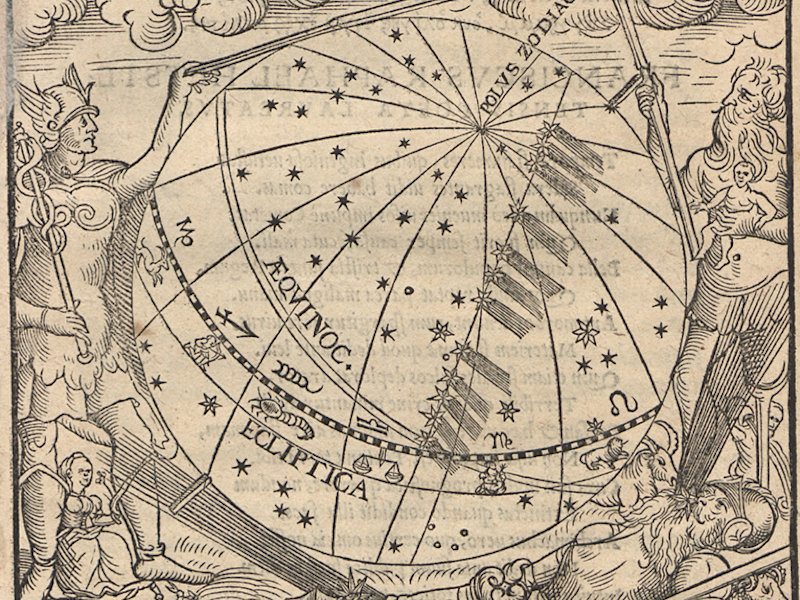
Cultural politics is also at the center of Secular Science in Court Society: Giovanni Battista Benedetti’s Physico-Mathematics, which is undertaken by Omodeo and Jürgen Renn. This line of research reveals the social-political roots, strengths, and limitations of the science that emerged in court society. It uses the figure of Benedetti to illustrate the time in which ‘artist-engineers’ were transformed into ‘scientist-engineers’ and, eventually, courtly ‘mathematical philosophers’. Benedetti’s work was characterized by the dialogical openness typical of the court literati, the technical accuracy necessitated by a centralized administration, and the volatility of a personally patronized enterprise. A new edition published as part of EarlyModernCosmology‘s collaboration with Edition Open Access in Berlin (2018) discusses the texts and contexts of Benedetti’s most daring insights on mechanics, the mathematical approach to natural investigation, and the connection of celestial and terrestrial dynamics within a post-Copernican perspective.
Institutions, Networks, and Crossroads of Cosmological Exchange
The two case studies in Cultural Politics: Venetian Republicanism and the Padua Hub (Baldin, Omodeo) illustrate how Venice is the perfect observatory from which one can view early modern cultural politics. Baldin investigates the presence of the Republic of Venice in European political thought, particularly in Hobbes, who read Paolo Sarpi’s political writings. He analyzes the particular development of Hobbes’ views on the Venetian Republic in the light of the intellectual context of the English Civil Wars and in the framework of the political, cultural, and religious relations that linked England and Venice at the beginning of the 17th century. Omodeo focuses upon the scholarly environment of the college of German students of arts and medicine in Padua to investigate how the expanding controversies between secular power and religious authorities reshaped Scholastic teaching and created a context in which decidedly a-Christian philosophical and cosmological theses could be taught and circulated. In a time in which Padua constituted an international hub of learning for students from all over Europe — including those from Protestant provinces and Orthodox countries — it was important for the University and Venice to remain autonomous from counter-Reformist confessional restrictions upon academic tolerance. Figures such as Cesare Cremonini were emblematic proponents of the autonomy of university culture from theology.
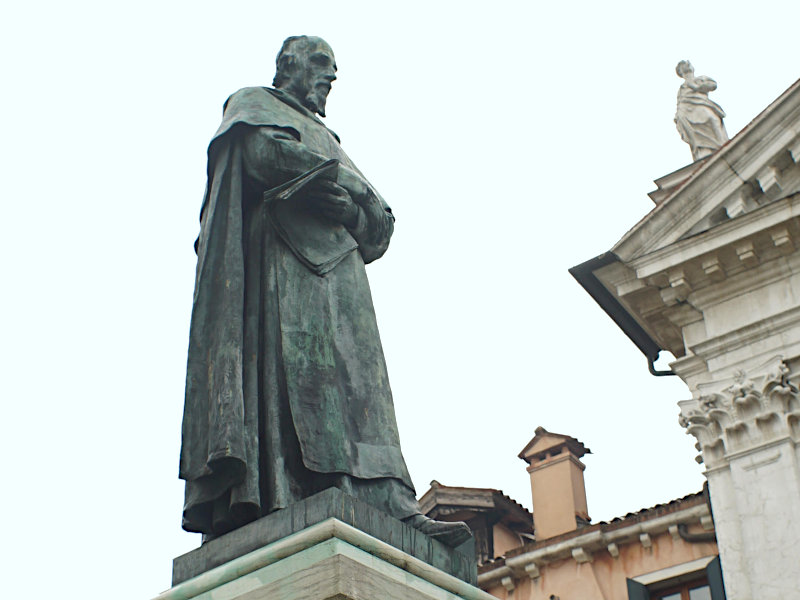
In his enquiry Clashing Epistemic Cultures: Pierre Gassendi vs. Jean Baptiste Morin on Physics and Cosmology, Garau focuses on the polemics between Pierre Gassendi (1592-1655) and Jean Baptiste Morin (1591-1659). He illustrates a case study on the formation of, and clash between, competing cosmological “epistemic cultures” in Catholic Europe in the aftermath of the condemnation of Copernicanism (1616) and of the Galileo Affair (1633). Garau analyzes the content, form, socio-political, and institutional aspects of the debate between Gassendi and Morin, paying particular attention to the intellectual networks implicated in, and generated by, them, and to the attempts to hegemonize the cosmological and scientific debate within the institutional context of the Collège Royal.
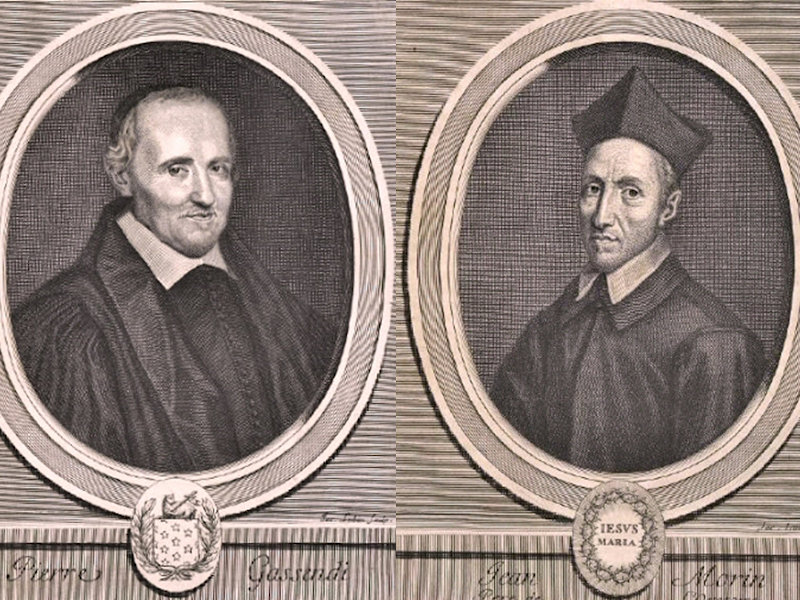
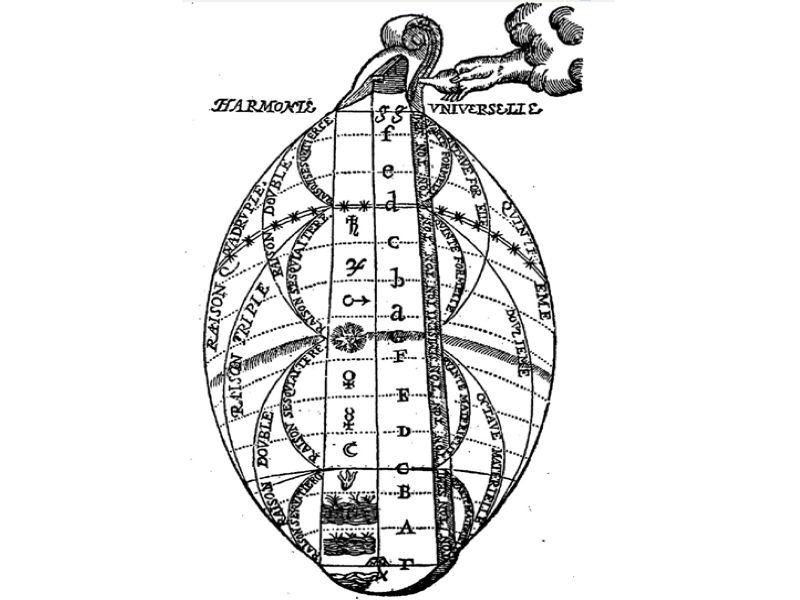
With a similar focus upon Parisian cross roads, Prins investigates the ways in which the Minim friar and universal scholar Marin Mersenne (1588-1648), in his Harmonie universelle (1636) but also in his earlier works, attempted to bring all musical knowledge in line with the new cosmology and mechanical philosophy of the seventeenth century. This research project contributes to a better understanding of the ways in which ancient, medieval, and Renaissance legacies affected the formation of seventeenth-century conceptions of the connection between the cosmos, man, knowledge, and music. It is significant because many leading scholars in the field of the history of philosophy and science still deny the importance of this impact and often frame the thought of seventeenth-century philosophers in terms of a radical break with the humanist past.
Fornasier’s PhD dissertation research, The World in a Nutshell: The Legacy of Renaissance Philosophy at the Jardin des Plantes, continues the focus upon Parisian intellectual culture with an investigation into the most revolutionary and innovative part of the medical community in early modern France. In the so-called Maison médicale du Roy increased in power and became a true competitor to the Sorbonne in control of medical practice in Paris. One of the most important achievements of the king’s doctors was the Jardin du Roy, or Jardin des Plantes. The most recent and the biggest botanical garden in Europe, this project was presented to the king by one of his physicians, Guy de la Brosse, who was also a botanist and a Paracelsian chemist. This case study is a terrific illustration of the interplay between political power in the assertion and dissemination of scientific knowledge.
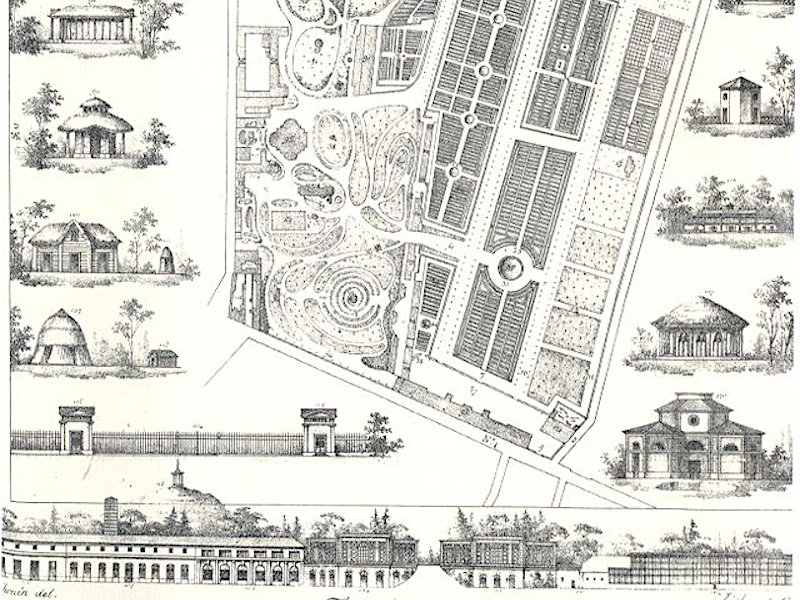
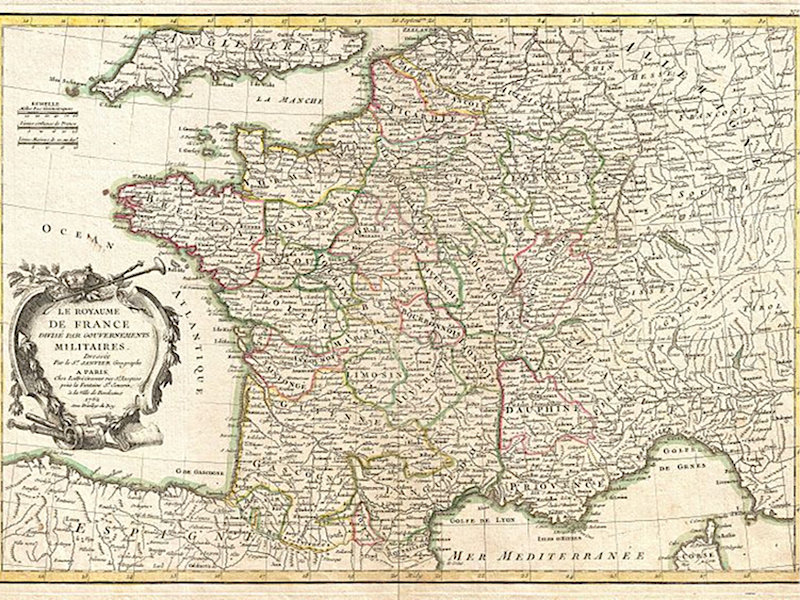
Storni also shows how the development of scientific practices in institutional settings was a central aspect in the formation of modern science in the seventeenth and eighteenth centuries. In Global Scientific Practices of Terrestrial Measurement, Storni analyzes the emergence of the scientist as a professional figure within a closed community which acknowledged specific forms of expertise and codifies certain norms of communication. Politics significantly contributed to this process by creating and managing scientific institutions, particularly academies. The episode that Storni takes to be especially significant is the long-lasting debate on the shape of the Earth. In this debate, which was continued in the eighteenth century, one can see the intertwinement of technical and practical discussions influenced by political concerns and cosmological arguments such as Newton’s theory of gravitational attraction.
Applied cosmology: Politics of Cosmography and the Environment
This line of research investigates instances of ‘applied cosmology’ through two case studies: cosmography and the management of natural resources. It includes examples as diverse as the colonial expansion of the Iberian Kingdoms and the geo-environmental management of the lagoon of Venice in early modernity, which attest to the indispensability of astronomical and cosmological knowledge for the solution of practical problems.
Concerning cosmography, we are interested in the ways in which this cosmology-based and practice-oriented discipline resulted from the encounters between Europe and the Americas. Pineda, visiting scholar, works on the exchange of astronomical images between the new world and Europe. She explores the visual language of the sciences, in particular astronomy, as a vehicle of cross-cultural exchanges as well as a contested field of cultural and political struggles.
In addition to this, Vidal, project guest, studies the meta-reflection on colonial encounters in the work of Giordano Bruno, who developed a harsh criticism of Spanish colonization in America.
The second strand of research on hydro-geological management, which is undertaken by Omodeo, shows how early modern geo-environmental practices and conceptions of the interactions between humankind and nature are linked to an idea of geological agency that foreshadows present-day concerns about the (dis)connection between the natural sciences and the humanities. It aims to explore early-modern geological agency in reference to both human beings as geological agents and to anthropomorphic visions of geological processes, and by doing so will also address contemporary debates surrounding the topic of the Anthropocene.

